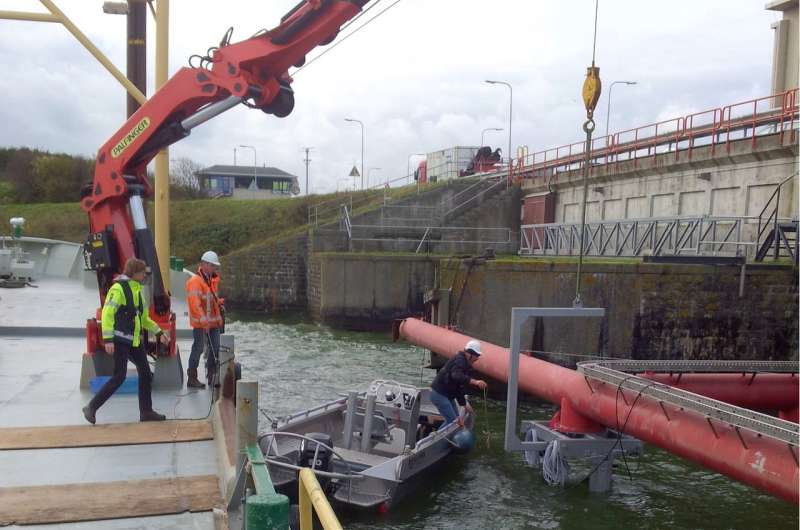Engineers turn to the sea to reduce the environmental cost of energy production

Engineers from Trinity are turning to the sea in an attempt to reduce the environmental cost of energy production. As the global population booms we will need to solve a perplexing equation that requires outputs to soar while dampening the effect our actions have on the environment.
And it could be the tides that hold the key.
Scientists have viewed tidal power as a potential option for reliably generating 'green' electricity for some years. There is significant untapped power in the world's oceans, and the tides are incredibly reliable – unlike the winds that generate power via turbines on land, we can almost set our watches by the tides. But the cost of equipment installation on the seafloor has – among other things – been prohibitively expensive.
Trying to reduce these costs is a Trinity team involving Experimental Officer in the School of Engineering, Gerry Byrne, Assistant Professor in Engineering, Tim Persoons, and Visiting Professor in the Trinity Business School, William Kingston.
The team tested a next-gen hydrofoil-based anchoring device at a unique tidal testing facility in the Netherlands to assess whether it might offer a reliable means of fixing an energy-generating tidal array to the sea floor. If practical, the device would significantly reduce installation costs because it is considerably smaller and lighter than current options.
Several undergraduate and postgraduate engineering students, including Cormac Fagan, Harry Crowley, Thomas Burke and Diarmuid Jackson, have assisted in the design, engineering, fabrication and calibration of this test system, which was shipped from the lab in Trinity to the test facility in The Netherlands.
Gerry Byrne and Professor Tim Persoons said: "After extensive tests we found that we could accurately predict the lift force associated. The drag force was underestimated by the numerical simulations, yet it was in line with expectations for this type of device."
"Importantly, our work has indicated that hydrofoil systems could significantly reduce the costs associated with the deployment and retrieval of tidal flow anchoring. This should assist in reducing the overall cost of energy from tidal streams and thus narrow the gap between this renewable resource and energy derived from fossil fuels."
Professor Kingston added that a "feature of the invention is that the hydrofoil is designed to be compact during deployment, but its wingspan can be expanded when it is in position," and that he sees other potential uses in ocean energy applications for the device.
The estimates of the global potential of tidal energy generation vary, but energy capacity could exceed 120 GW globally. Tidal stream energy could theoretically supply more than 150 TW/h per annum, which is well in excess of all domestic electricity consumption in the UK.
Gerry Byrne added: "The UK's tidal power resource is estimated to be more than 10 GW, which represents about 50% of Europe's tidal energy capacity, so that provides a measure of how important it is to further develop our options in harnessing this untapped resource. Here in Ireland the theoretical gross energy content of our waters is a sizeable 230 TWh/year."
Provided by Trinity College Dublin



















